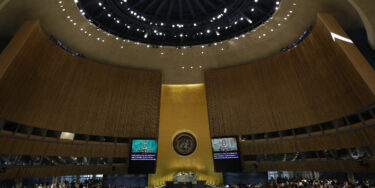States urged to respect, protect, and fulfill the SRHR of adolescents and youth
30.06.19
(Human Rights Bodies / Sexual and Reproductive Health and Rights)
Through the Vienna Declaration and numerous regional and international commitments, member states agreed to respect, protect, and fulfill the human rights of adolescents and young people, including their rights to life, bodily autonomy, education including comprehensive sexuality education, survival, and development.
However, many member states are hesitant to recognise the role of adolescents and young people’s sexuality beyond links to reproduction. Human rights violations affecting adolescents and youth must be located within the context of multiple and intersecting oppressions. Millions of them, especially girls, are coerced into unwanted sex or marriage,[1], putting them at risk of unwanted or early pregnancies, unsafe abortions, sexually transmitted infections (STIs) including HIV, and life-threatening childbirth.[2]
Indeed, pregnancy and childbirth-related complications are the leading cause of death among adolescent girls aged 15-19 years worldwide.[3] Across the globe, restrictive laws and third party authorization and parental consent requirements continue to hinder adolescents and young people’s full realisation of their sexual and reproductive rights. With the largest global youth population ever, millions of today’s young people will be failed if the human rights violations affecting us are not effectively addressed and redressed.
We urge the Human Rights Council to recognise and reaffirm the sexual and reproductive health and rights of all adolescents and young people through its resolutions, dialogues, debates, and UPRs. Further, we urge member states to respect, protect, and fulfill the sexual and reproductive health and rights of all adolescents and young people, with particular attention to those facing multiple and intersecting forms of oppression, including through full recognition of their legal capacity to access comprehensive sexuality education and sexual and reproductive health services autonomously. Furthermore, states should put in place effective measures to prevent and eliminate violations of adolescent girls’ sexual and reproductive rights, including actions aiming to control girls’ sexuality, harmful practices, and coerced or denied medical interventions, as well as to effectively combat widespread impunity and provide adolescents and youth, in particular girls, with effective reparations, access to justice and redress, and guarantees of non-repetition in cases of violation and denial of their bodily rights.
This statement was presented at the 41st session of the Human Rights Council by the Asian-Pacific Resource & Research Centre for Women (ARROW) on behalf a number of organizations, July 8th 2019.
[1] UNICEF. (2018). Child Marriage: Latest Trends and Future Prospects.
[2]Abdul Cader, A. (2017). Ending Child, Early, and Forced Marriage: SRHR as Central to the Solution.
Kuala Lumpur: Asian-Pacific Resource & Research Centre for Women (ARROW).
[3] WHO. (2018). Adolescents: health risks and solutions.




